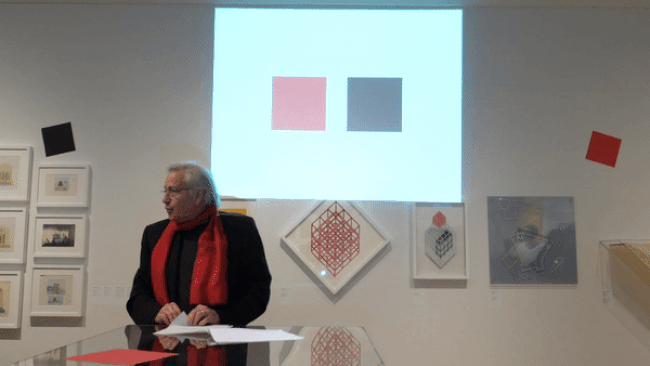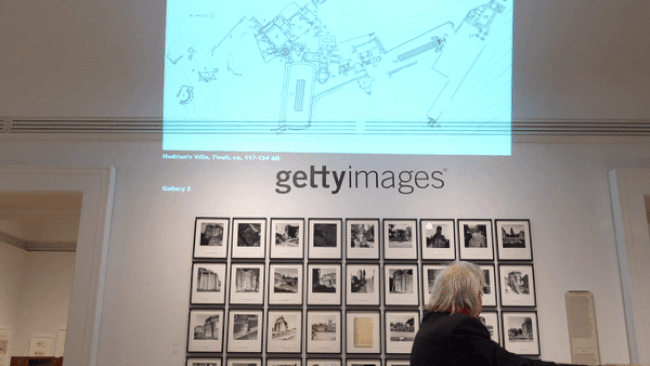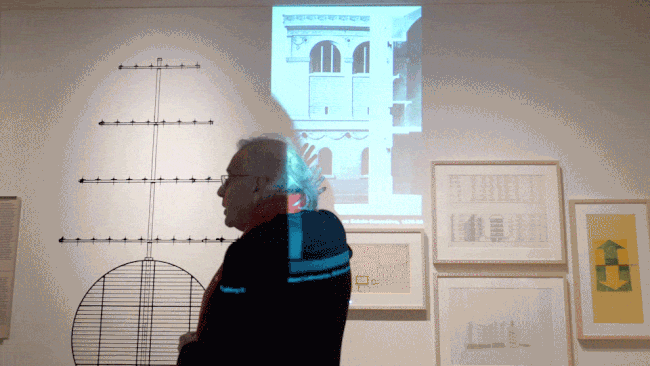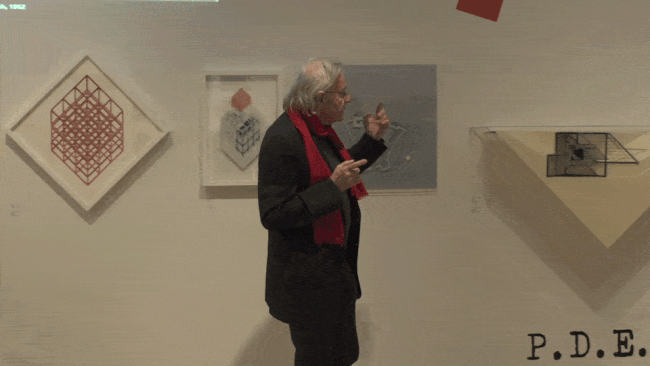The Sublime and the Farce
A counter-tour by Bernard Tschumi of Architecture Itself and Other Postmodernist Myths
Good evening. I’d like to start by narrowly defining postmodernism in architecture as a short-lived stylistic movement that existed between the mid-1970s and the end of the 1980s, known for stridently attacking the dogmatic certainties of modernism and modernity. This self-proclaimed movement may deserve some further attention today due to the larger phenomenon Sylvia Lavin calls the “postmodernization” of our time.
In Architecture Itself, Lavin, as an astute scholar and a patient archaeologist, uncovers and identifies a series of intended and unintended symptoms or side effects, residues, and by-products of this historical period. She provides us with a welcome overview of what the various protagonists of the era had in common, even though they’ve been thought of as belonging to opposite camps. But in doing so, Lavin risks bypassing and even drowning out the major ideological battles that took place at the time between the postmodern historicists and a small but critical heterogeneous group later coined the Deconstructivists.
I’d like to perform a sort of reverse archaeology and attempt to reconstitute, out of the residues and by-products of the time, what the battles really were. My hope is to be able to identify which battles are still going on, and which ones are better left forgotten. For this, I need to step back a little, back to 1968.
The 1968 events didn’t happen out of the blue. If architecture in the 1960s seemed well entrenched in a solid ideology of modernity, progress, constructability, and the geodesic dome, the rest of the cultural world was asking major questions about the society we live in. Foucault, Barthes, Lacan, Deleuze, Derrida, Lyotard, and Baudrillard in France; Marcuse, McLuhan, and Jameson in the United States; Habermas in Germany and Eco in Italy—all were developing a short critical discourse that questioned the certainties that modernism had erected as dogma.
The word memory becomes a favorite architectural term soon followed by the word archaeology. The 1973 Milan Triennale has Aldo Rossi and his Tendenza insisting that there are architectural constants predating modernity and that we should all learn from history, about history, and about the constants of the past.
Suddenly everybody is rediscovering history, especially pre-twentieth-century history. Ricardo Bofill, Léon Krier, and all those who had studied semiotics introduce a new paradigm: historical allusion. Charles Jencks publishes The Language of Postmodern Architecture in 1977; Paolo Portoghesi prepares the 1980 Venice Biennale, entitled The Presence of the Past. In the US, the ground had been well prepared by the Museum of Modern Art in New York with the 1975 Architecture of the École des Beaux-Arts show that would mesmerize a generation of architects previously committed to modernism.
Within a few years, architectural culture produces some of the ugliest, most laughable clichés and the most pathetic visual jokes, many of which receive great popular claim. To be elitist and populist at the same time becomes the name of the game and the ultimate ambition of the postmodern architect.
There’s some significant grumbling. Not everyone is willing to join the establishment bandwagon of historicist postmodern buildings with its supergraphics and funny hats. On the West Coast around SCI-Arc, in London around the Architectural Association, and in New York around the Institute for Architecture and Urban Studies, a few figures coalesce, all different from one another, but with one thing in common: a critical belief in the power of questioning and in the possibility of projecting into the future rather than the past. MoMA’s 1988 Deconstructivist show presents an unlikely alliance between twentieth-century avant-garde constructivism and the French deconstructionist philosophy of the time.
Now please note—and this is important—from the mid-1970s to the late 1980s, we simultaneously have (A) a few isolated maverick architects who experiment with ideas and concepts and use words like in-between, superimposition, fragment, deformation, program, diagram, and trace, who believe in theory and who build very little. And (B) we have that mainstream of postmodernist architects who defend contextualism and historicism and use double-entendres and visual puns, but also build a lot throughout the world including in Asia and the Middle East. A and B could not be more different, yet they exist during the same period.
Now the fascinating thing about Sylvia Lavin’s remarkable yet enigmatic exhibition is that she touches both worlds equally and tries to navigate these dangerous waters. Sylvia carefully avoids engaging the major ideological differences between the pomo historicists and the neo-progressists. But it may be worth looking at these battles. They often went from the sublime to the ridiculous, from the tragedy to the farce. I will try to use Architecture Itself to point out the best and the worst of the period.
Before we start our counter-tour, let me share my point. There was a time when I was booed at any conference for stating that what architecture does is more important than what it looks like. I argue that during the so-called postmodernist years, what architecture did was more interesting than what it looked like. During the ten to fifteen years documented in this exhibition, there are some pieces of genuine intelligence that are quite important to our early twenty-first century. These are the good. I will of course argue that there are also pieces that are better left forgotten. These are the bad, and even the ugly. I’ll use large red squares and large black squares to differentiate between the two. I’ll let you decide which is which.
So, let us begin.
We have here an extraordinary, small etching by Piranesi and a fragment of an exhibition by Peter Eisenman done at the CCA some years ago. It’s interesting that these two artifacts start the exhibition. I believe it’s important. Piranesi has been appropriated both by the left and by the right, by the modernists and by the conservationists, by anyone interested in the most inventive avant-garde, and by those sentimental about the past. An example of this is Colin Rowe, his friend Léon Krier, and a few others re-appropriating Piranesi’s famous Campo Marzio drawing and turning it into a passé, conservative, historicist document. While you have Piranesi inspiring, for example, Sergei Eisenstein, one of the major avant-garde filmmakers of the early twentieth century, you also have him being used by Rowe for the exact opposite.
Now this, interestingly enough, is also what Peter Eisenman does. Eisenman creates something called the Institute for Architecture and Urban Studies—called an institute to reinforce the importance of academia in America at a time when it was not as highly regarded—and succeeds in establishing a credibility, a mode of looking at history and its theory as an instrument or tool of architectural understanding. Simultaneously, the same Peter Eisenman does everything he can to subvert and to dismantle those academic certainties. I will, in this spirit, give both the Piranesi drawing and the Eisenman exhibition a red mark.
Next, the fascination for the past. The necessity for a number of architects to return to memory and to try to find certainties not in the dogmas of modernism but in the solidity of architectural history informs, I believe, much of what we’re seeing in Architecture Itself. Quite often, it was a serious misunderstanding and a superficial fascination.
These images from Hadrian’s Villa, just outside Rome, were documented by countless architectural students from the West Coast to Princeton because photography was somehow perceived as the way to compose and to reorganize architectural elements. In this room that celebrates institutions, the institution that collects the photographs, the Getty, collects photographs but not plans and not drawings. In reality, the photographs are only superficial evidence; the really important thing is the plan.
Institutions can be either superficial or incredibly deep. There is a red square next to the CCA. The CCA is unusual because it tries to do several things at the same time. Forty years ago, I don’t think there were many people who understood that the best way to be critical is to be both scholarly and inventive. You invented a new form of institution that’s revolutionary in its attempt to question what architecture is. And I think it works, so congratulations, you get a red mark.
Now, I’m sorry to have to put a black mark next to them, the Deutsches Architekturmuseum—I don’t mean it personally. I think it’s much more a symptom than a cause. To collect architectural models simply because they seem to correspond to a superficial sensibility different from what preceded it is not enough. You have to have a critical discourse. You have to have a mandate. DAM did not quite do it. The collection is interesting because of what it represents today, but it’s only about representation and not about concept—or at least that’s my own, I have to admit, subjective view.
MoMA is more ambiguous. MoMA, because of its incredibly clear view and direction in the arts scene, was somehow able to give credibility to a number of architectural phenomena. We all know the International Style exhibition curated by Philip Johnson in 1932. The credibility that MoMA brought to the architectural discussion is important because it forced architects to look at themselves in the mirror. So, a red mark for MoMA.
Let’s go on. We are in the mid-1970s, just coming out of a period when semiotics and semiology had architects asking themselves, Is architecture a language? And, inevitably, If architecture is supposed to speak, what does it say?
Quite quickly, people realize that, if architecture is a language, it’s not a terribly good communicator. Robert Venturi, of course, after Complexity and Contradiction, starts to experiment with the pure surface treatment of buildings. His ISI Building tries to make a parallel between the façade of a building and a punch card, itself a sort of computer language.
I couldn’t resist showing this nineteenth-century building by Henri Labrouste. It’s the famous Sainte-Geneviève Library in Paris, where Labrouste puts the name of the authors who are in the library, put them as a form of information, a sign, a signal on the library itself. The incredible influence of that building and of that period permeates much of this exhibition, and we’ll see it again and again and again.
There are even cases when Cedric Price, someone for whom I have an enormous admiration and fascination, does drawings purely to make people happy at the gallery. For those who know the work of Cedric, those who have seen how analytical, how objective, how cool he was, here his drawings are made just to look nice. Guys, that’s something else. Suddenly, something strange happens: architects lose their critical ability. That’s why I give Cedric a bit of red—I can only like him so much—and a little bit of black.
Finally, in the last room, you have a beautiful—I give it a red mark wholeheartedly—Venturi, of Venturi Scott Brown, a wall with a series of printed flowers. When I look at this, I immediately think of Andy Warhol and the Marilyn portraits, his way of looking at the surface. We already saw it with Venturi, this notion that maybe buildings have no materiality. They’re just simply, you know, appearances, pure representations.
In the introduction I gave you, I said that there were two worlds. Here, this opposition is incredibly well represented by Michael Graves, who at that time is interested in superficiality—and I don’t mean that here in a necessarily negative way—but also in image devices. He succeeds because he is extraordinarily talented in playing a game of shapes that at no moment asks the questions, What are we doing as architects? What is our role? What is the language that we use?
Probably the most important things from this particular period are the questions that were really raised. And this is why I gave a red mark to Peter Eisenman; he asks the questions, What is representation now in terms of the tools that we use? What is an axonometric? What is a perspective? What is simply a piece of paper?
This questioning of the way we think and the way we draw is incredibly important, especially today, when we use digital media, and talk about social media as well. This questioning was really, to me, a very important aspect of the period. I also give a small nod to Frank Gehry because Frank Gehry, in his models, addresses something that neither Graves nor Eisenman addresses—the question of materiality. When Frank Gehry uses sheets of metal, it’s metal. It’s not paper. It’s not cardboard. It’s not ideas. It’s really damned boring, tough metal. Material intelligence is also part of what architecture is.
So let me go back for a minute to the surface. We saw Andy Warhol, Venturi Scott Brown, and now, look at this, an extraordinary building by Herzog de Meuron. It uses silkscreen technology, uses photography. With architects, you don’t see many of their photographs except as documentation. So, here invention in images and invention in material is directly, to me, a result of what preceded before. I’ll just footnote that Herzog and de Meuron were students of Aldo Rossi. The building on the left is from 1970. The building on the right was just completed. So nothing is simple. In other words, much of what is in this exhibition can be red or black, black or red. So look again at this exhibition, and imagine that all the black is red, and all the red is black.





